Слайд 3Newspaper Style
purposeful and thematic arrangement of interrelated lexical, phraseological and grammatical language

means as a separate unity
Слайд 4Newspaper Style
that basically serves the purpose of informing and instructing the reader
in
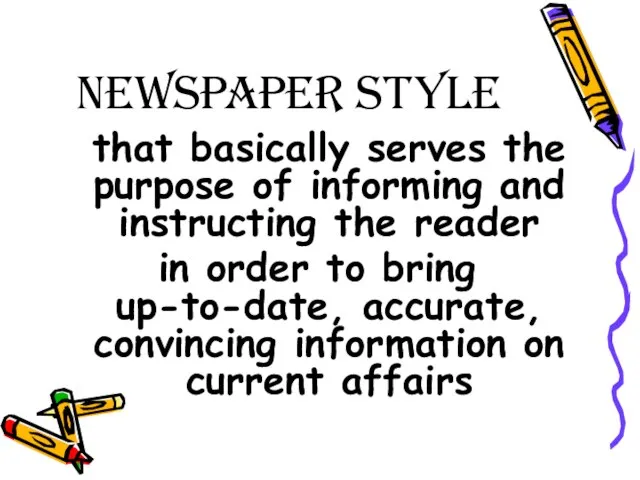
order to bring up-to-date, accurate, convincing information on current affairs
Слайд 5Newspaper Style
D.Crystal:
“… present a wider range of linguistically distinctive varieties than
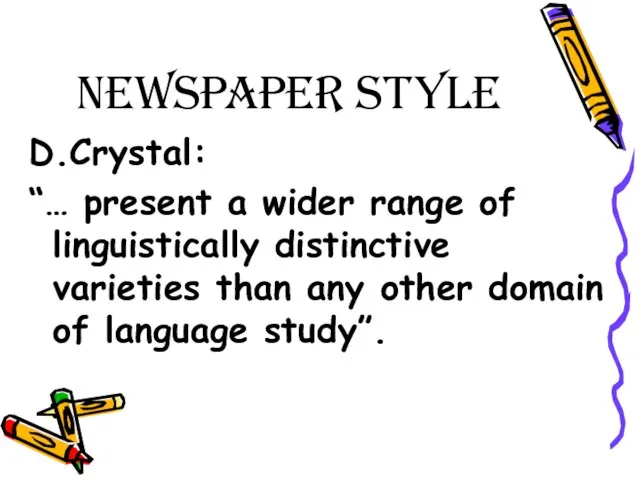
any other domain of language study”.
Слайд 6Newspaper Style
text
being compact and coherent
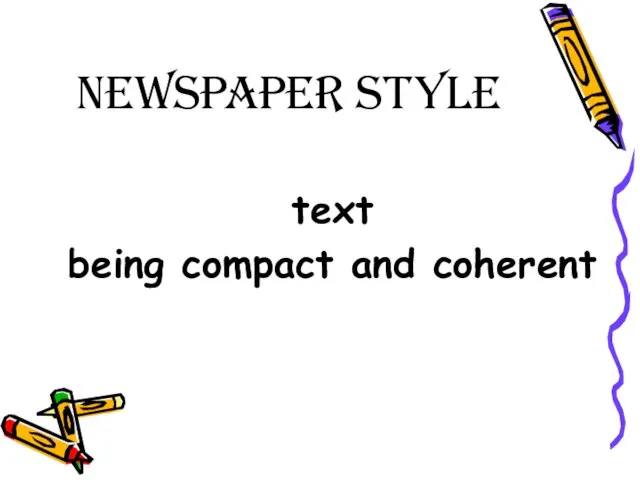
Слайд 7Newspaper Style
the last of the English literary styles
to be recognized
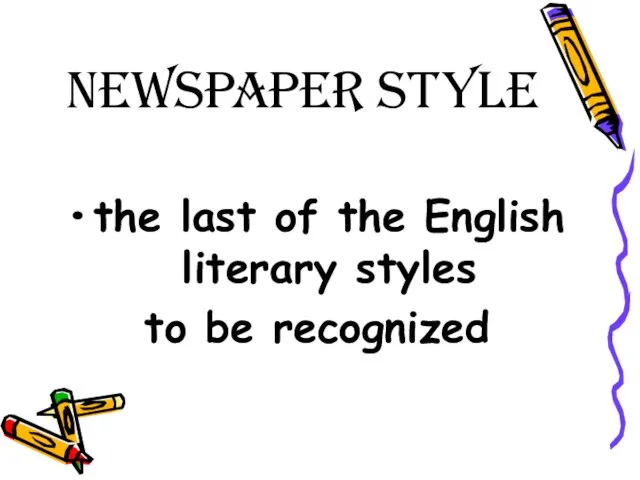
Слайд 8Newspaper Style
Features:
1) Special political and
economic terms
2) Non-term political vocabulary
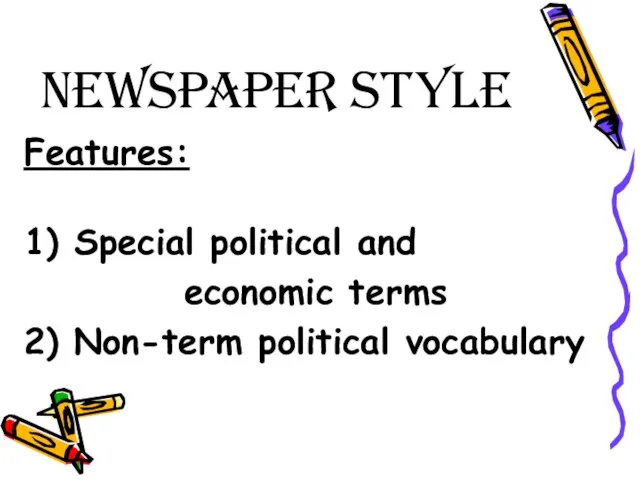
Слайд 9Newspaper Style
3) Newspaper clichés
4) Clichés
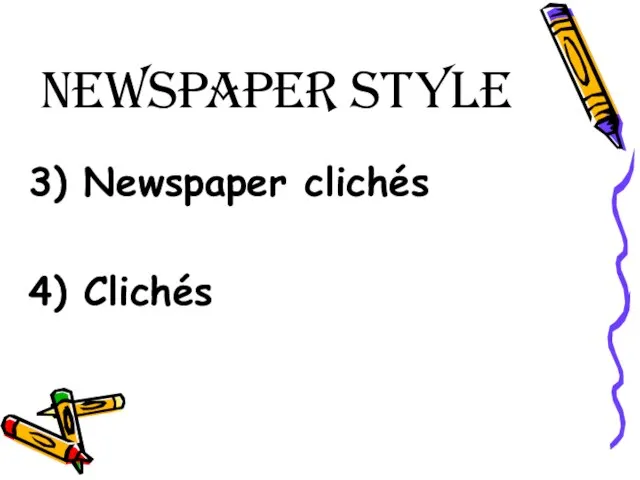
Слайд 10Newspaper Style
5) Abbreviations of various types as
it helps to save space

and time
Слайд 11Newspaper Style
read as individual letters:
WHO
World Health Organisation
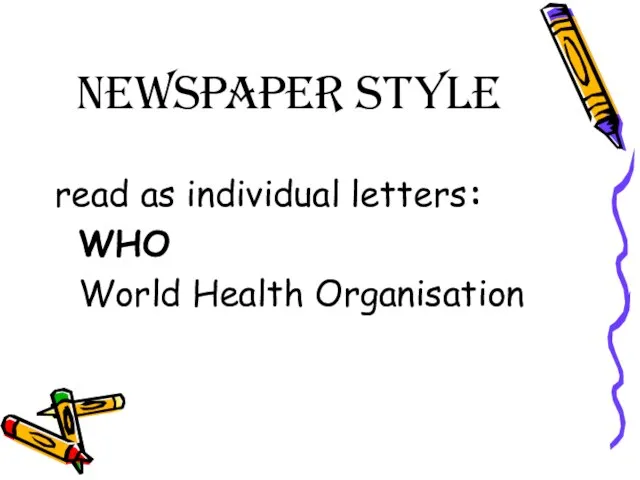
Слайд 12Newspaper Style
NATO /'neitou/
North Atlantic Treaty Organisation
OPEC /'oupek/
Organisation of Petroleum
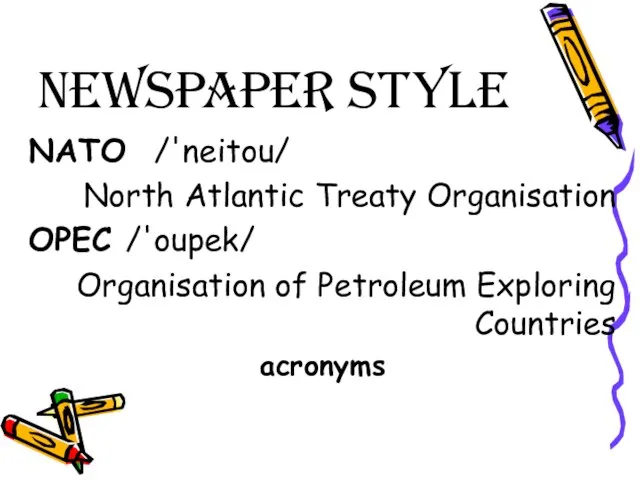
Exploring Countries
acronyms
Слайд 13Newspaper Style
6) Abundant use of Neologisms
(Gorbymania)
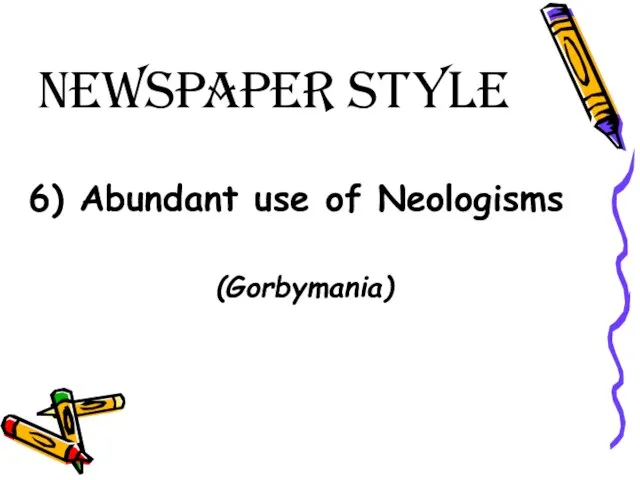
Слайд 14“Weekly News”
First English Newspaper
May, 23, 1622
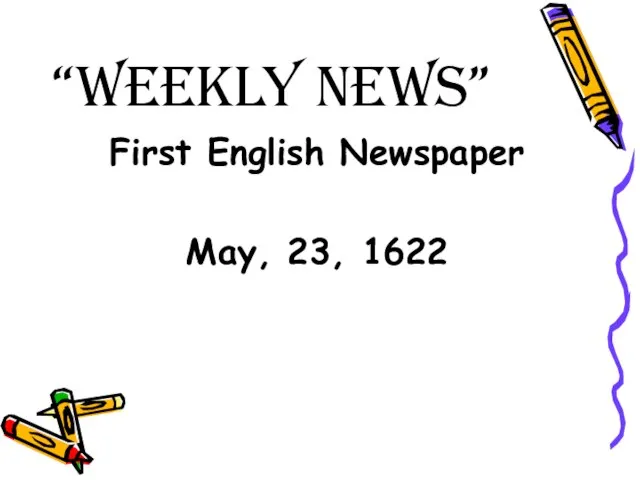
Слайд 15“London Gazzette”
The first
governmental newspaper
February, 5, 1666
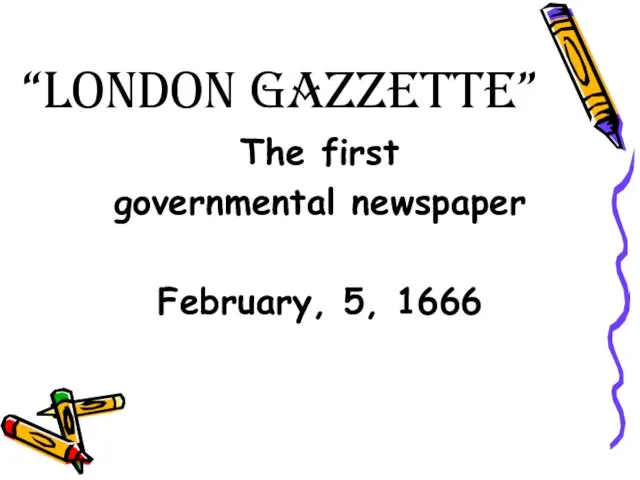
Слайд 16“Daily Courants”
First English daily newspaper
March, 11, 1702
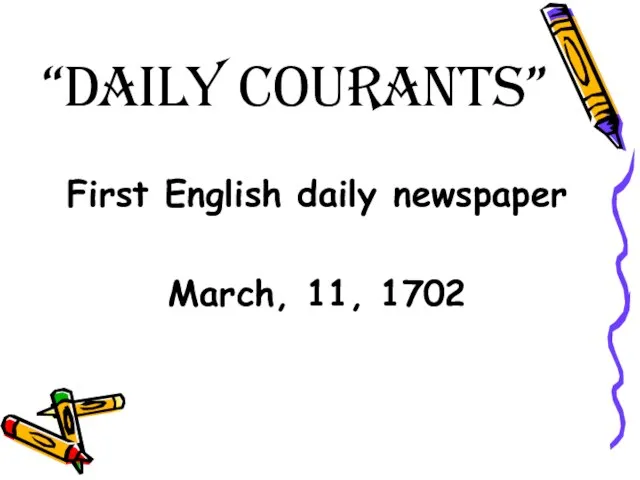
Слайд 17Earliest English Newspapers
Absence of any comments
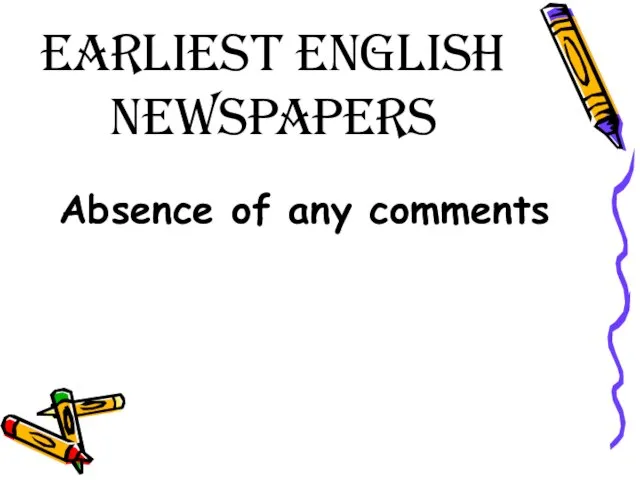
Слайд 18headlines
title given to a news item
or
a newspaper article
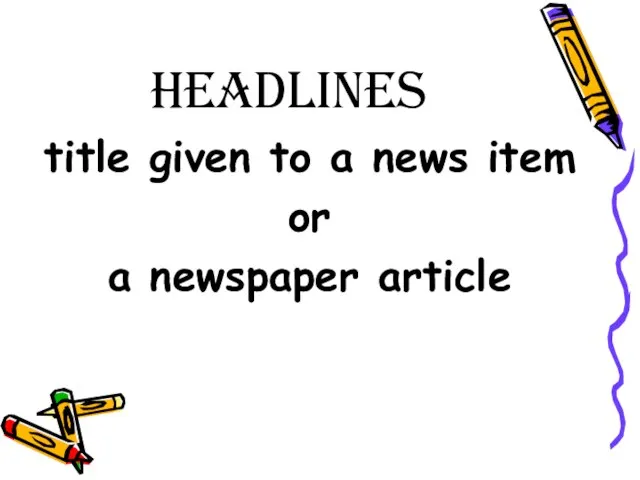
Слайд 19headlines
Function:
to catch the readers’ attention
and at the same time

Слайд 20headlines
to provide brief information what the news that follows is about
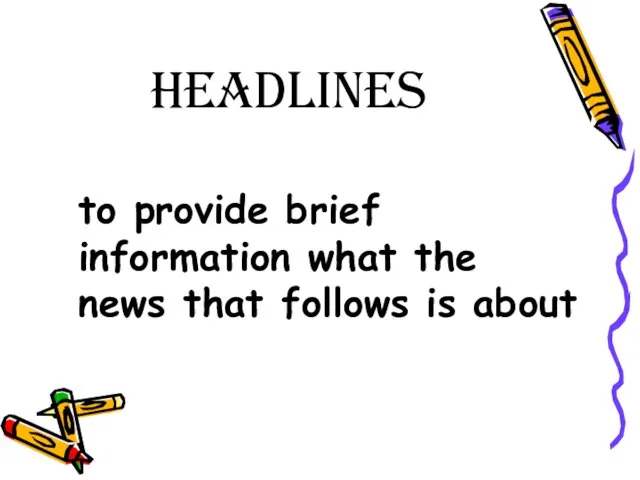
Слайд 21headlines
Features:
as few words as possible
the words tend to be short and sound
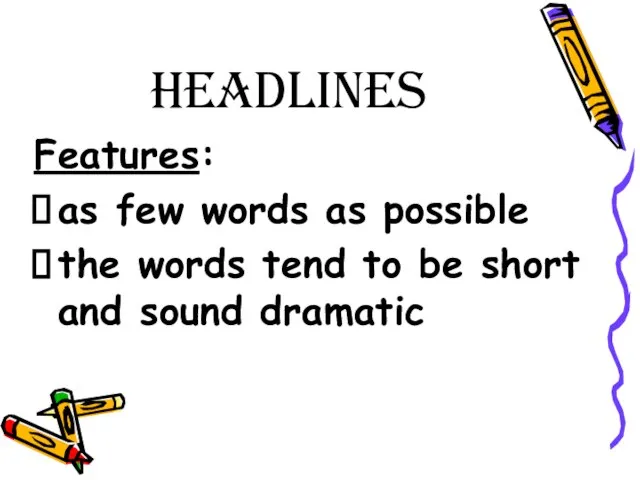
dramatic
Слайд 22headlines
Concise syntax
Full declarative sentences
Interrogative sentences
Rhetoric questions
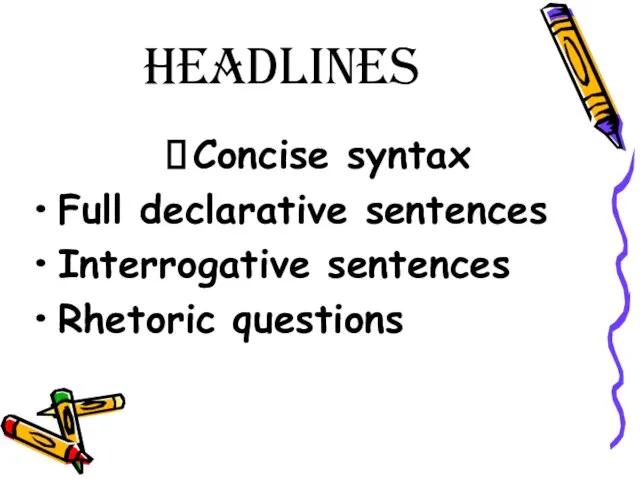
Слайд 23headlines
Nominative sentences
Elliptical sentences
a) auxiliary verb omitted
b) subject omitted
c) subject and part
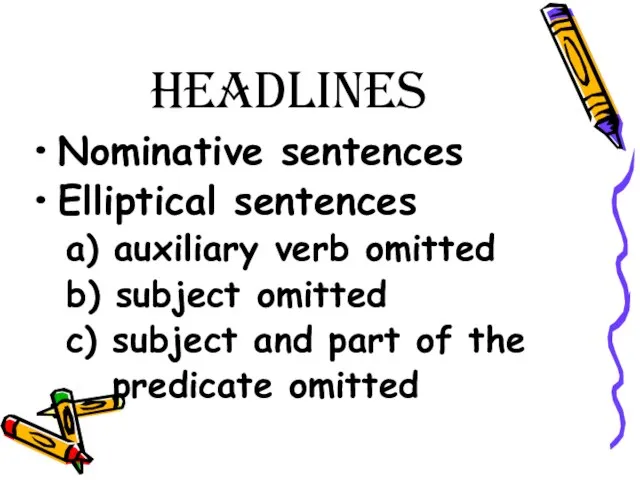
of the
predicate omitted
Слайд 24headlines
Phrases with verbals
a) infinitive standing for “going to happen”
b) participial and gerundial
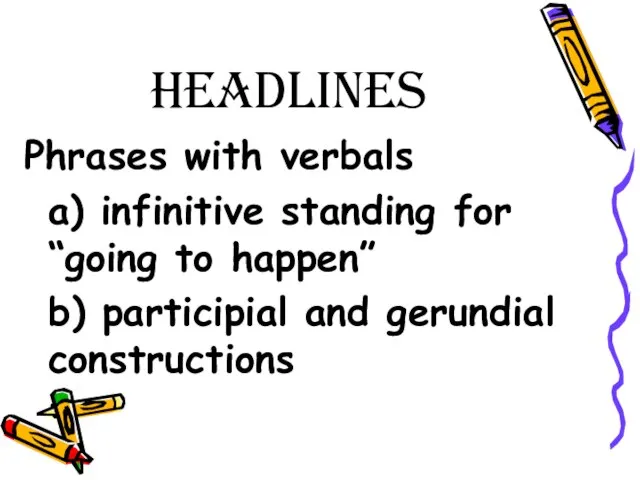
constructions
Слайд 25headlines
Use of direct speech
Emotive syntax and vocabulary suggestive or approval or disapproval
Allusive
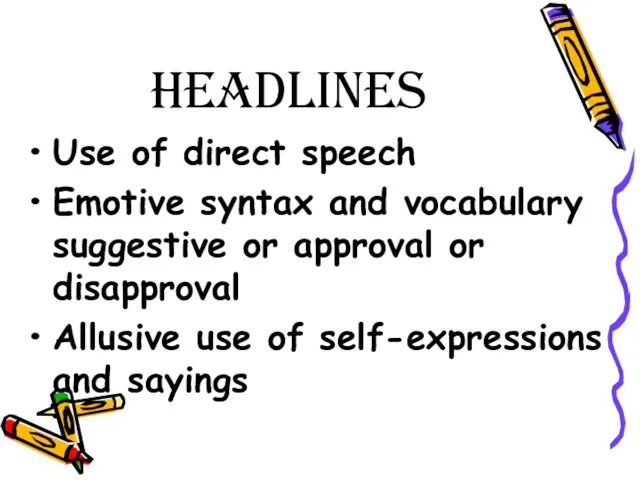
use of self-expressions and sayings
Слайд 26headlines
Deformation of special terms
Use of stylistic devices producing strong emotional effect

Слайд 27Brief New Items
Function:
To inform the reader
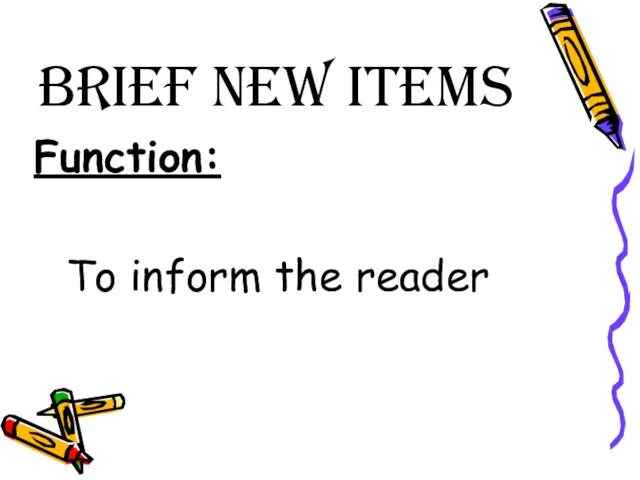
Слайд 28Brief New Items
state facts without giving explicit comments

Слайд 29Brief New Items
Features:
1) absence of any individuality of expression and lack of

emotional colouring
Слайд 30Brief New Items
2) matter-of-fact and stereotyped forms of expression
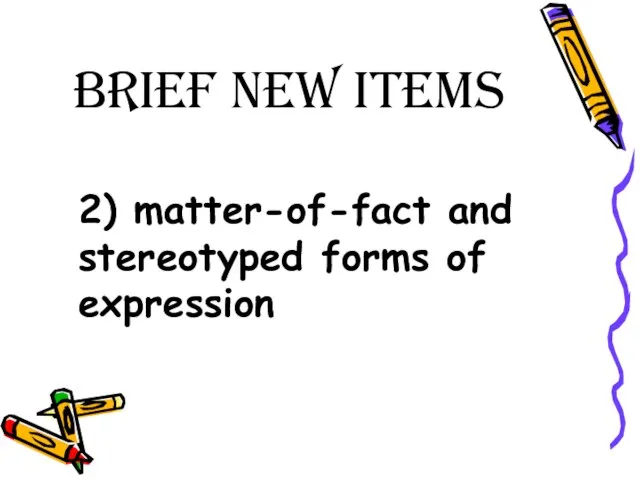
Слайд 31Brief New Items
3) peculiar syntactical structure as the reporter is obliged to

be brief:
a) complex sentences with a developed system of clauses
Слайд 32Brief New Items
b) verbal constructions (infinitive, participial, gerundial);
and verbal noun constructions
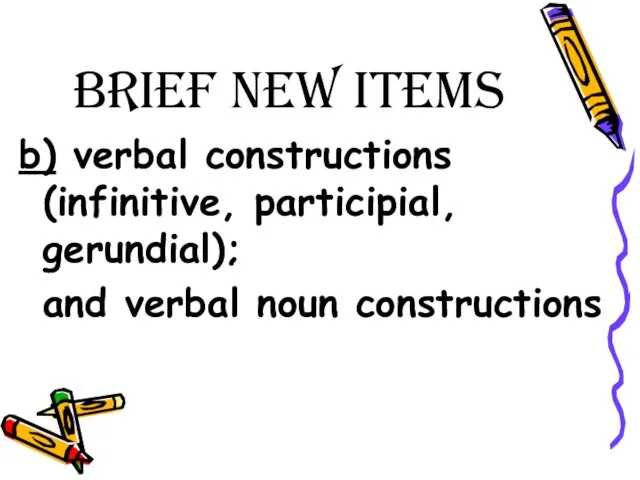
Слайд 33Brief New Items
c) syntactical complexes, esp. the nominative with the infinitive, used
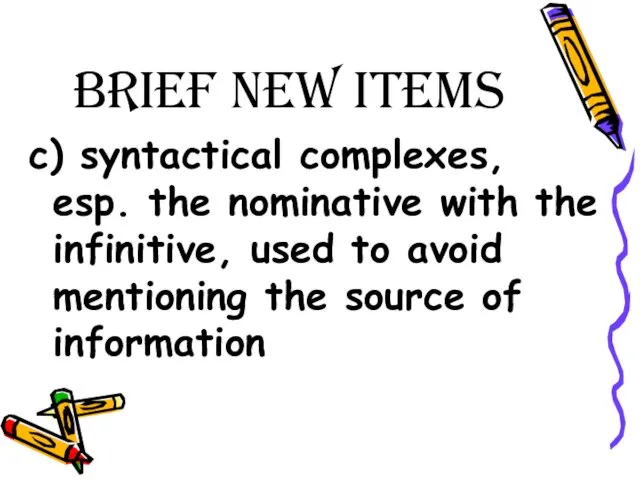
to avoid mentioning the source of information
Слайд 34Brief New Items
d) attributive noun groups
e) special word order
f) occasional disregard for
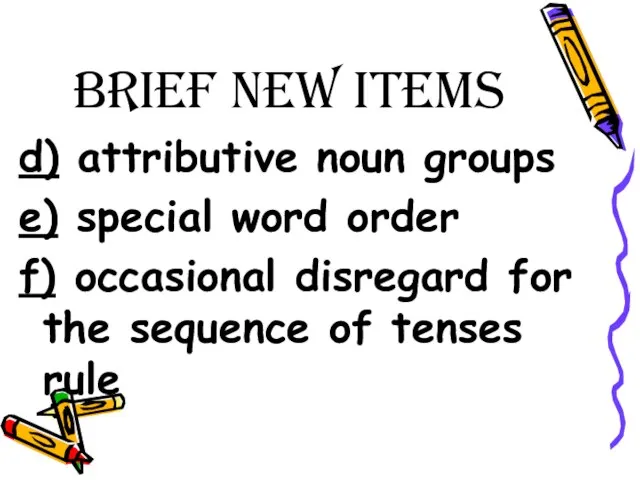
the sequence of tenses rule
Слайд 35Advertisements & Announcements
Function:
to inform the reader
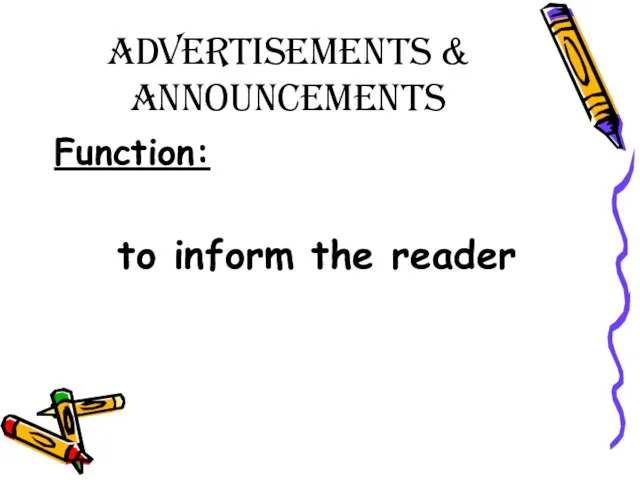
Слайд 36Advertisements & Announcements
classified
non-classified
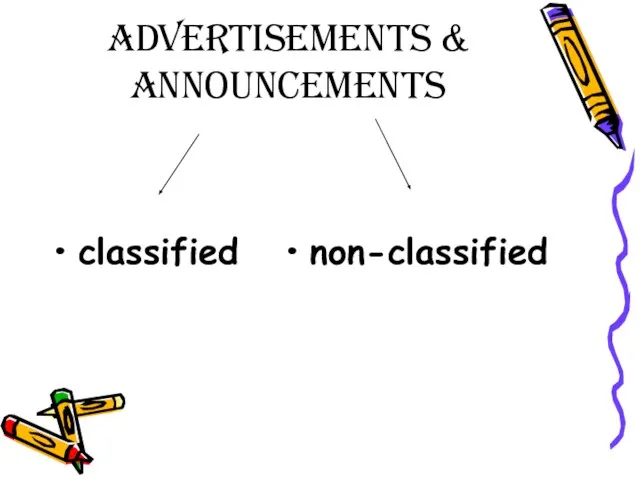
Слайд 37Advertisements & Announcements
Classified:
birth
marriages
death
in memoriam
business offers

Слайд 38Advertisements & Announcements
Features:
mostly neutral vocabulary with rare usage of
emotionally coloured words
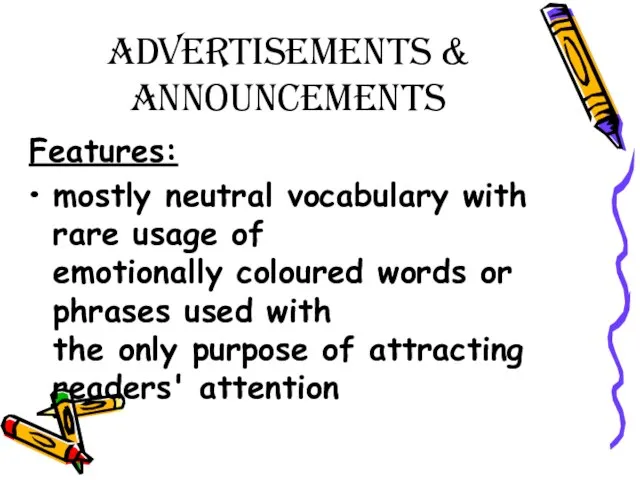
or phrases used with
the only purpose of attracting readers' attention
Слайд 39Advertisements & Announcements
fixed, often elliptical, pattern
telegram-like statements, with articles and punctuation marks
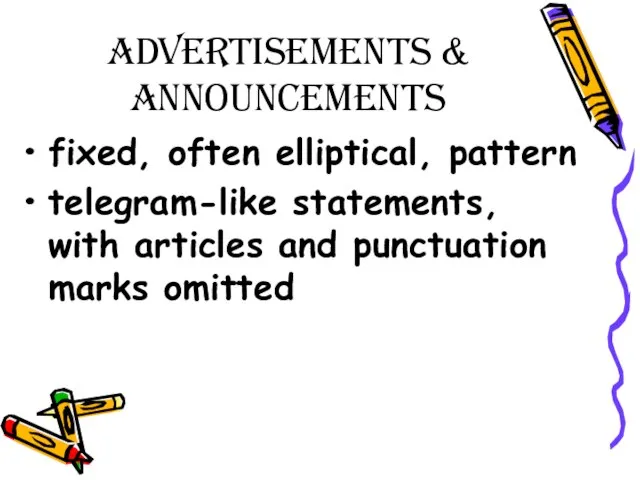
omitted
Слайд 40Advertisements & Announcements
Non-classified
the variety of
language forms and
subject-matters
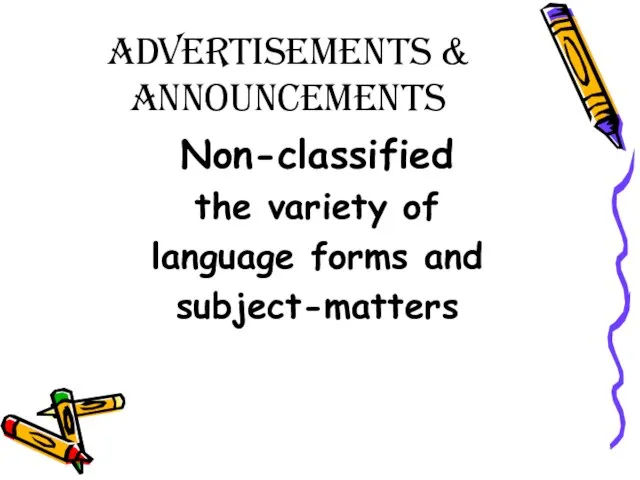
Слайд 41Articles
Feature article
Reports
Editorials
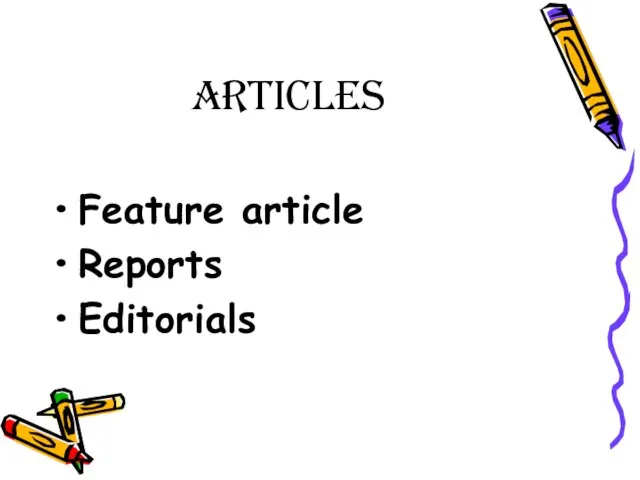
Слайд 42Articles
Function:
to influence the reader by giving an interpretation of certain facts
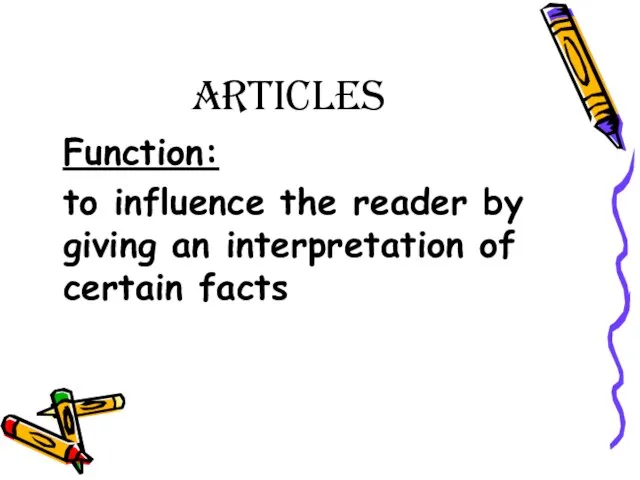
Слайд 43Articles
Features:
combination of different vocabulary strata
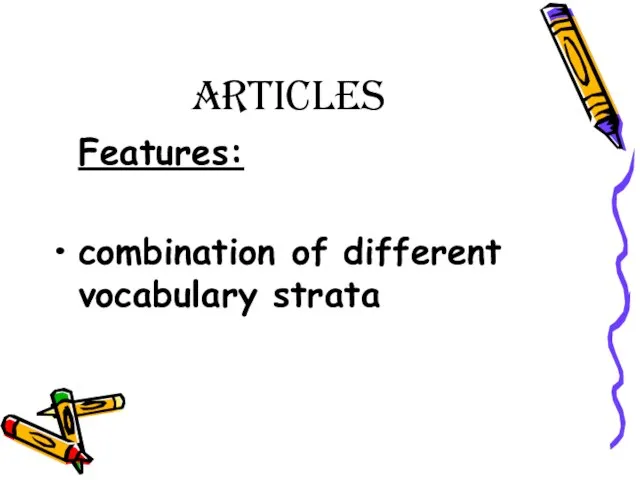
Слайд 44Articles
usage of emotionally coloured language elements,
both lexical and structural

Слайд 45Articles
accepted usage of colloquial words and expressions, slang, and professionalisms
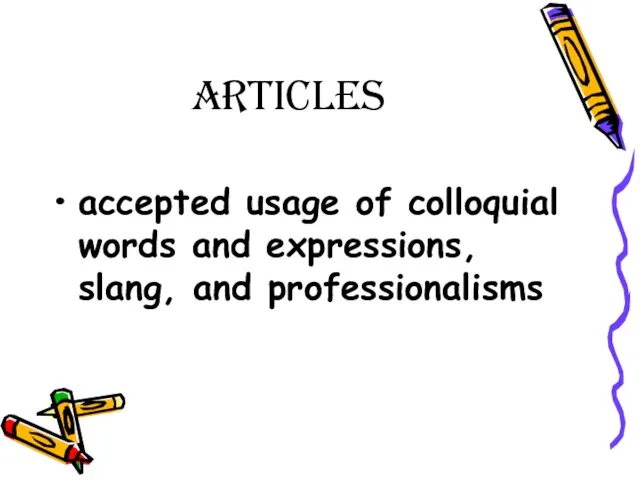
Слайд 46Articles
usage of various stylistic devices but trite and
traditional in nature
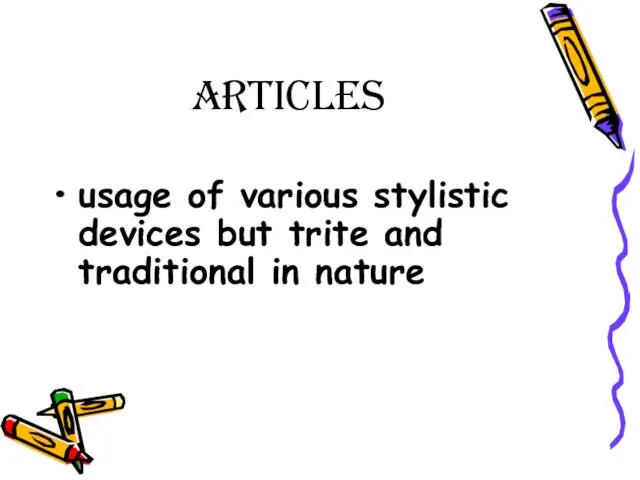
Слайд 47Articles
traditional periphrases,
Wall Street (American financial circles),
Downing Street (the British Government),
Fleet Street
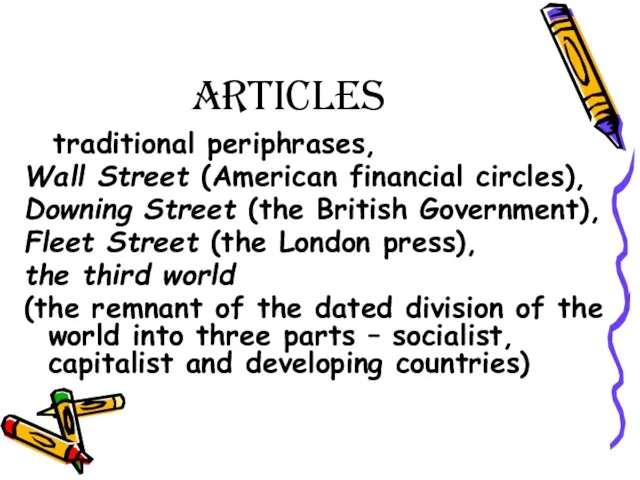
(the London press),
the third world
(the remnant of the dated division of the world into three parts – socialist, capitalist and developing countries)














































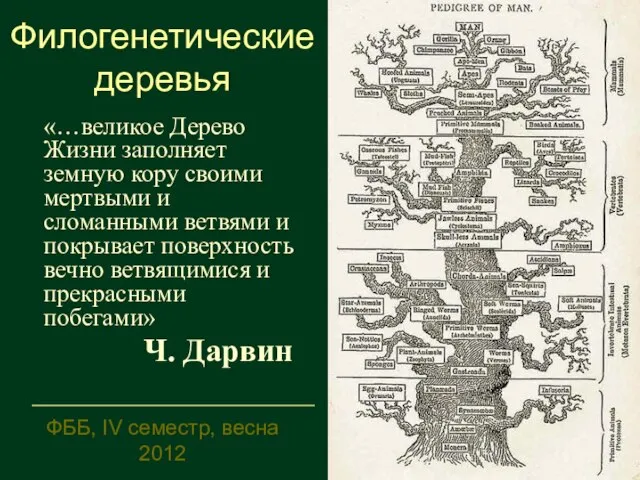 Филогенетические деревья
Филогенетические деревья for MVIDEO
for MVIDEO ?
? Памяти сына
Памяти сына Презентация на тему Поощрения и наказания в семье
Презентация на тему Поощрения и наказания в семье Электротехника
Электротехника Многоэтажный автопаркинг с собственной инфраструктуройРоссия, Московская область, г.Ступино,микрорайон «Юго-Западный»
Многоэтажный автопаркинг с собственной инфраструктуройРоссия, Московская область, г.Ступино,микрорайон «Юго-Западный» Биофизика
Биофизика Открытый транспортный процессинг (городские перевозки)
Открытый транспортный процессинг (городские перевозки) Комлевая Анна-презентация
Комлевая Анна-презентация БИЗНЕС-ЦЕНТРИСКРЫ, 31
БИЗНЕС-ЦЕНТРИСКРЫ, 31 Палеозой
Палеозой Кейс по страхованию на тему Отказ в выплате по страховке бытовой техники
Кейс по страхованию на тему Отказ в выплате по страховке бытовой техники Презентация на тему Химия в сельском хозяйстве
Презентация на тему Химия в сельском хозяйстве Рисуем одуванчик
Рисуем одуванчик ЛОГАРИФМИЧЕСКАЯ ФУНКЦИЯ
ЛОГАРИФМИЧЕСКАЯ ФУНКЦИЯ Veretennikova
Veretennikova Химический состав клетки
Химический состав клетки Поделки из кругов
Поделки из кругов Презентация по биологии на тему «Бесполое размножение»
Презентация по биологии на тему «Бесполое размножение» Гончарное мастерство. Горшенья
Гончарное мастерство. Горшенья Рельеф суши
Рельеф суши Презентация на тему Искусство и культура Древнего Египта
Презентация на тему Искусство и культура Древнего Египта  Slides with pictures about the heeling effect of the aloe vera
Slides with pictures about the heeling effect of the aloe vera Органическая химия. Основные положения. История развития науки
Органическая химия. Основные положения. История развития науки Формирование структуры научно-исследовательской работы
Формирование структуры научно-исследовательской работы Психология формирования ученического коллектива
Психология формирования ученического коллектива Роль взаимоотношений подростков в формировании репродуктивной функции
Роль взаимоотношений подростков в формировании репродуктивной функции